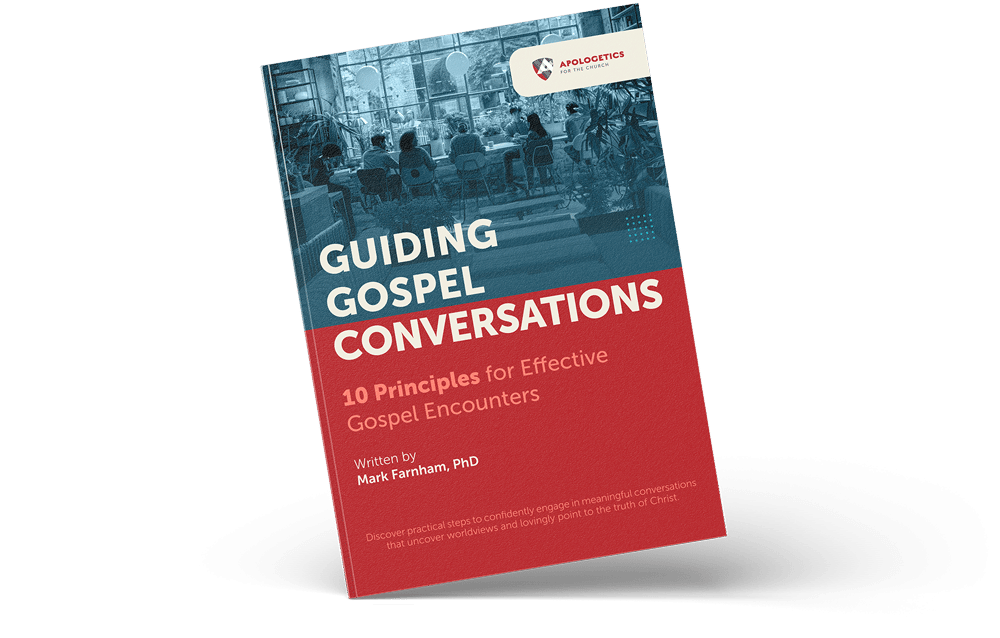Download The Free Guide
Discover practical conversation skills to get unbelievers thinking and make way for the Spirit’s work in their lives.
"*" indicates required fields
 The Bible did not fall from heaven as a finished product placed in the hands of men. Neither was it, like the claims of both Mormonism and Islam, translated from golden plates found in a hillside or cave. Rather, God communicated to human authors in various ways, and guided their writing so that what was written was what God wanted to reveal to them. While 2 Timothy 3:16 tells us what Scripture is, the clearest passage that describes this process is found in 2 Peter 1:16-21.
The Bible did not fall from heaven as a finished product placed in the hands of men. Neither was it, like the claims of both Mormonism and Islam, translated from golden plates found in a hillside or cave. Rather, God communicated to human authors in various ways, and guided their writing so that what was written was what God wanted to reveal to them. While 2 Timothy 3:16 tells us what Scripture is, the clearest passage that describes this process is found in 2 Peter 1:16-21.
In this text we see that those human authors who wrote the books of the Bible did not do so on their own initiative (2 Pet. 1:19-21). They did not decide to sit down and write sacred texts. Rather, as the Holy Spirit moved in their hearts and minds they wrote divine thoughts, mediated through their personalities and styles. The end result is Scripture that accurately communicates what God wanted to say, with humans as the instruments of God’s revelation. The word translated “carried along” or “moved” is also used to describe the effect the wind has on sails. The wind blows into the sails, which moves the ship forward. Peter is saying that as the Holy Spirit initiated revelation to the authors of Scripture, they wrote under His influence and guidance.
One question often raised pertains to the reliability of the Bible after all these years. Many critics charge that we could not possibly know what the original words of Scripture were because of errors in the copies. Two examples help dispel that notion. First, the Old Testament was carefully preserved by trained scribes in Israel whose main duty was to preserve the ancient texts. Their success in this is demonstrated in the discovery of the Dead Sea Scrolls in 1947 in Israel. Among the scrolls found was a copy of Isaiah that was dated to about 100 B.C. Before this discovery, the oldest known copy of Isaiah dated back to 900 A.D. The difference in the copies, then, were about 1,000 years apart. Scholars were amazed to find that these copies were virtually identical to each other, showing very little difference. The only differences were minor spelling mistakes that did not in any way affect the meaning of the text of Isaiah.
The New Testament manuscripts are equally reliable. When we compare the almost 6,000 Greek manuscripts that date back to the 2nd century A.D., they are more than 95% identical to one another, and the remaining 5% of differences are spelling variations and simple errors made by later copyists that can be clearly identified as copy mistakes. None of these differences affect the teaching or doctrine of the Bible at all. In addition to Greek copies, we possess more than 20,000 early copies of the New Testament in many other languages also, including Latin, Syriac, Coptic (from Egypt), Gothic, Armenian, Nubian (from Sudan), and many more. All these show remarkable consistency over the centuries.
The conclusion to this is that the Bible is extremely reliable, even though parts of it are 3,500 years old. That means that when we confess that the Bible is our source of truth for doctrine and life, we can hold it confidently. So, what role does the Bible play for Christians and their doctrine?
In the next post, we will look at the Reformation principles of Scripture that make it central to the Christian faith.
by Jeffrey Mindler, Research Assistant “Therefore take up the whole armor of God, that you may be able to withstand in the evil day, and having done all, to...
by Jeff Mindler, Research Assistant “For the wrath of God is revealed from heaven against all ungodliness and unrighteousness of men, who by their...
When defending the faith against unbelievers, we want to strike at the heart of the unbelieving system of thought. We want to identify the main source of...